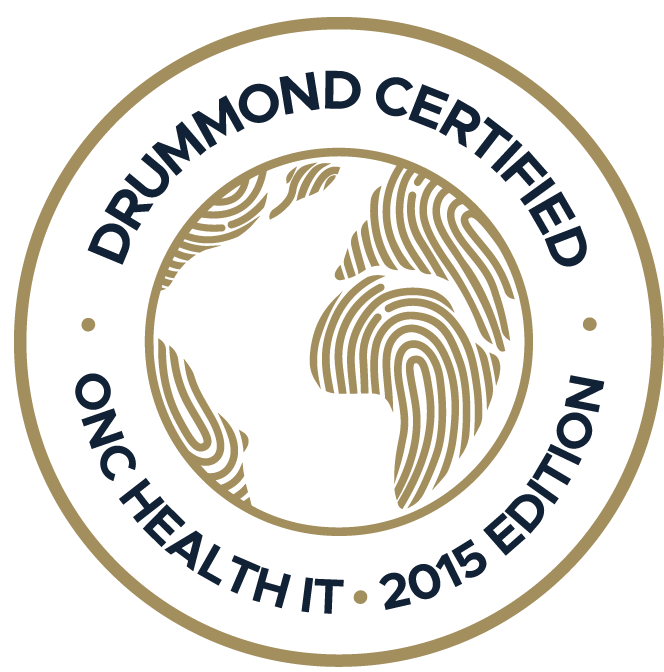Is your practice struggling to overcome operational bottlenecks despite trying everything from hiring extra staff to outsourcing certain tasks? A reliable healthcare practice management software might be the answer...
As the pandemic continued to ravage communities across the globe, it quickly became increasingly clear that staffing was a fundamental issue in healthcare. From nurses and doctors to pharmacists and health aides, the demand for healthcare was never higher than in the two years that COVID-19 ran rampant. And that's precisely what led us to where we are today.
As the weaknesses were exposed in the global healthcare system, staffing became a top priority for many parts of the world. From China to the UK to the United States, the need for healthcare workers was at an all-time high. And there wasn't a single country that was exempt from this. Now, as we look toward the future, it's important to note that staffing issues will continue to be a problem, even after the pandemic. The World Health Organization estimates that by 2030, there will be a shortage of 9.9 million healthcare workers globally. That's a pretty staggering number.
But it's not just the 2030s that we need to worry about. In the United States, it's estimated that by 2025, we will need to hire 2.3 million new healthcare workers in order to take care of our aging population. This is according to a report compiled by the global healthcare staffing consultancy Mercer. It's an ongoing issue that will only become more pressing as time goes on. The situation is dire, but some steps can be taken to improve the state of staffing in healthcare. As with anything, it starts with awareness and understanding of the problem. Only then can we begin to find a solution.
So, let's do just that, shall we? Here's everything you need to know about the current state of staffing in healthcare.

The Impact of Covid-19 on Healthcare Staffing
The COVID-19 pandemic has caused a drastic shift in the way we live and work, affecting almost every aspect of our lives. The healthcare sector has been on the front lines of this crisis, struggling to keep up with the influx of patients and the unprecedented demand for critical care. Healthcare staffing has been particularly challenging, with many healthcare workers risking their health and safety to care for others.
The effects of the pandemic have been felt across the globe. In the United States, for example, hospitals have needed help to keep up with the demand for care. As a result, many patients have had to be turned away due to a lack of beds and staff. This has put immense pressure on the healthcare system and highlighted the importance of having a well-staffed facility. But it's not just hospitals that have been affected, either. The pandemic has also hit nursing homes and other long-term care facilities.
In fact, nursing homes make up less than 1% of the population but account for nearly 40% of all COVID-19 deaths in the United States. This is due, in part, to the fact that these facilities are often understaffed, which leaves residents vulnerable to infection as there are insufficient staff members to care for them properly.
The icing on the cake was that the pandemic has also led to an increase in burnout and mental health issues among healthcare workers. By working long, grueling hours in dangerous conditions, many workers have found themselves under an immense amount of stress. Several resignations and retirements have been reported as a result, further exacerbating the staffing crisis.
All of the above combined conducted a perfect storm for staffing issues in healthcare. The pandemic may have exposed the weaknesses in the system, but the sheer volume of patients and the strain on staff has made it clear that this is an ongoing problem that needs to be addressed.

Medical Staffing Solutions: What Can Be Done?
The unprecedented COVID-19 pandemic has highlighted the importance of investing in healthcare staffing, not just in numbers but also in terms of quality. With the increasing demands on healthcare systems worldwide, it is crucial to ensure that healthcare professionals receive the necessary support, training, and resources to deliver the best possible care to patients.
Additionally, improving healthcare professionals' working conditions is imperative to work safely and effectively without compromising their health and well-being. By prioritizing investment in healthcare staffing, we can ensure that our healthcare systems are better equipped to handle future crises and that patients receive the care they need and deserve.
The staffing situation in healthcare is alarming, but what can be done to improve it?
Well, one of the many solutions is using technology to our advantage. There are several ways technology can be used to improve staffing in healthcare, but the prime example is the use of electronic health records (EHR) and practice management software. EHRs have many benefits, but one of the most important is that they can help free up staff time. This is because they automate a lot of the tasks that are typically done by hand or that require a lot of time to do.
For instance, EHRs can be used to schedule appointments, order lab tests, and track patient information. This frees up staff members to actually provide care rather than having to do paperwork. Healthcare staffing is at an all-time low, and the pandemic of COVID-19 has only worsened things. With hospitals, clinics, and nursing homes struggling to keep up with the demand for care, it's clear that something needs to be done.
EHRs are one way to help improve staffing levels because they create opportunities for enhanced productivity and efficiency. Automating tasks and freeing staff time ease the burden on overworked and understaffed facilities.

PracticeEHR - The One Solution
In addition to helping you manage your staff more efficiently and reducing the need for overtime hours, Practice EHR's powerful software can also automate the most time-consuming tasks in your medical practice. Our comprehensive medical practice management software lets you focus on what matters most - patient satisfaction. Our software is designed to make your medical practice run more smoothly so that you can provide the best care possible to your patients.
Contact us today to learn more about how our EHR software can help.
Topics: Healthcare Office Management, Small Practice, EHR Solution, New Technology, Cloud-based EHR, Industry Update, EHR, Staffing in Healthcare
RECENT POSTS



TOPICS
- EHR Solution (191)
- EHR (124)
- digital age (117)
- Patient Care (116)
- Medical Billing (110)
- Specialty-Specific EHR (110)
- Industry Update (97)
- Technology in Healthcare (84)
- EHR Features (79)
- Small Practice (77)
- Medical billing services (72)
- HIPAA Security (62)
- Integrated EHR (62)
- RCM (62)
- New Technology (44)
- Cloud-based EHR (43)
- Telemedicine (42)
- Healthcare Office Management (40)
- Practice EHR News (38)
- Kiosk (31)
- Revenue Cycle Management (28)
- AI Solutions (23)
- ePrescribing (21)
- AI Scribing (16)
- Best EHR Software (16)
- EMR (12)
- Practice Management Software (12)
- AI-powered Medical Billing (10)
- Client Favorites (10)
- Practice Automation (10)
- TeleVisit (10)
- The ONE (10)
- AI EHR (9)
- Switching to New EHR (9)
- MACRA/MIPS (8)
- Patient Portal (8)
- Urgent Care (8)
- AI Scribe (7)
- Best EHR Practice (7)
- EHR Integration (7)
- Psychiatry EHR (7)
- E-Prescribing (6)
- Product Updates (6)
- events (6)
- AI scanning (5)
- MIPS (5)
- Automated Health Tools (4)
- HIPAA (4)
- Insider (4)
- Internal Medicine EHR (4)
- MIPS Reporting (4)
- Mobile EHR (4)
- Orthopedics EHR (4)
- Podiatry (4)
- Podiatry EHR (4)
- Telehealth Platform (4)
- Chiropractic EHR (3)
- Digital Experiences (3)
- EHR Flaws (3)
- EHR Implementation (3)
- EHR for Chiropractors (3)
- EHR for Small Practices (3)
- Family Medicine EHR (3)
- Integrated Practice Management (3)
- Medical Practice Management Software (3)
- Patient Check-in Kiosk (3)
- PracticeEHR GO App (3)
- Regulatory Updates (3)
- Telehealth Platforms (3)
- Clearinghouse (2)
- Dermatology EHR (2)
- EHR Scheduling (2)
- Eligibility Verification in Medical Billing (2)
- Foot and Ankle Care (2)
- Foot and Ankle EHR (2)
- Health records 101 (2)
- Medical Coding Services (2)
- Medical Credentialing (2)
- Multilingual AI Scribe (2)
- Quality of Patient Care (2)
- Reporting Under MIPS (2)
- Risk and Liability in Medical Settings (2)
- What Works Clearinghouse (2)
- AI Scan (1)
- Bariatric EHR (1)
- Behavioral Health Practices (1)
- Billing Communication (1)
- Billing for Private Practices (1)
- Cardiology EHR (1)
- Cash Flow (1)
- Cashless Payments (1)
- Charting (1)
- Data Security (1)
- Dos and Don'ts (1)
- EHR Guides (1)
- EHR KPIs (1)
- EHR Questions to Ask (1)
- EHR Transition (1)
- EHR for Chronic Illness (1)
- EMR vs EHR Difference (1)
- ENT EHR (1)
- Endocrinology EHR (1)
- Family Medicine (1)
- Gastroenterology (1)
- Gastroenterology EHR (1)
- General Surgery EHR (1)
- Geriatric AI scribe (1)
- Geriatrics EHR (1)
- Guides (1)
- Healthcare Compliance Certification (1)
- Healthcare Practice Office Management (1)
- Help Center Videos (1)
- Insurance Reimbursement (1)
- KPI (1)
- Key Performance Indicators (1)
- Lab Processing (1)
- MACRA (1)
- Medical Billing Partner (1)
- Nephrology EHR (1)
- Neurology EHR (1)
- Pain Management EHR (1)
- Pediatrics EHR (1)
- Physical Therapy EHR (1)
- Practice Cash Flow (1)
- Practice Efficiency (1)
- Pulmonology EHR (1)
- Reconsider Your EHR (1)
- Simplify Practice Management (1)
- Staffing in Healthcare (1)
- Switch Medical Billing Providers (1)
- Urgent Care Medical Billing (1)
- Urology EHR (1)
- Voice-Activated AI Scribe (1)
- insurance claim denials (1)








